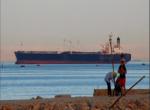Indian Ocean, the third largest oceanic body in the world accounting for 20% of the total area of the world under water, holds a position of paramount importance for India. Since India occupies a central position in the Indian Ocean Region (IOR), the significance of the Indian Ocean to the maritime security of the country hardly needs to be emphasized. Rightly and appropriately, India considers the Indian Ocean as its own backyard. As pointed out by the historian K.M.Pannikar, “For India, the Indian Ocean is a vital sea. Her lifelines are concentrated in that area, her freedom is dependent on the freedom of that water surface.” On another front, Indian Ocean holds the key to the climatic dynamics of the Indian sub continent including monsoon on which is dependent the fortunes of the Indian agriculture, a major contributor to the Indian economy. Further, the Indian Ocean is also crucial to the energy security of the country. According to the Journal of the Indian Ocean Region, more than 80% of the world’s sea borne trade in oil transits through the Indian Ocean choke points.
In view of the rapidly expanding strategic importance of Indian Ocean, in recent years, there has been a growing clamour for strengthening and expanding the Indian presence in this vitally located oceanic body with a view to ensure the security of mainland India on a sustainable basis. Against this backdrop, sometime back, Avinash Chander, Director General of Defence Research and Development Organisation (DRDO) , had stressed on the need for India to put in place an effective mechanism to fully monitor IOR in a complete and three dimensional manner. To accomplish this objective, he has suggested the development and deployment of about 80-100 satellites designed for covering the IOR in a detailed manner .There are said to be 19 Chinese satellites keeping a watch over the IOR. As it is, the growing Chinese space based ocean surveillance capability with particular reference to the Indian Ocean has been a matter of concern for US strategic planners. In recent years, ocean observation space platforms have emerged as a major technological tool to keep a tab on the oceanic expanse on a sustained basis with a high degree of effectiveness.
By all means, India has vital stakes in the IOR even as the geostrategic focus of the world is shifting slowly to this region through which a bulk of world’s shipping trade passes. The changing geo-political stakes in IOR in the last decade has acted as a stimulus for the littoral nations to look seawards and this presents India with a challenging opportunity to expand its influence over the countries in the IOR. Rapidly shifting geopolitical environment underpins the need for India to not only safeguard its own interests but also cater to the security needs of island nations in IOR. Clearly and apparently, India would need to boost its naval capabilities to reach out to the littoral states with a greater degree of confidence. The recent handing over of India’s home grown Advanced Light Helicopter(ALH) Dhruv to Maldives for helping this island nation carry out search and rescue operations could imply a shot in the arm for the Indian influence in IOR.
As pointed out by India’s former Foreign Secretary and currently the Indian Ambassador to USA Nirupama Rao, as the main resident power, India has a vital stake in IOR. ”We have a vital stake in the evolution of a stable, open, inclusive and balanced security and cooperation architecture in the region,” says Rao. She further observes “By definition, this would need to be a consensus based process where all the stakeholders, who have a legitimate presence in the region, make their respective contribution to the regional security”.
There is no denying the point that the threat of global terrorism, piracy and international crime coming together and converging at the strategically located IOR is real and serious. And the increased trade in raw materials including oil from West Asia has radically transformed Indian Ocean into one of the busiest waterways in the world. In addition, the emergence of a unipolar world in the aftermath of the collapse of the once mighty Soviet empire and the prevailing disturbed security environment in Iraq and Afghanistan have all gone to significantly diminish the importance of Atlantic even while boosting the critical importance of Indian Ocean as a significant conduit for the Western military supplies.
Meanwhile, the Indian Navy whose current primary area of focus is on IOR , has acquired an “eye in the sky” in the form India’s fully home-grown GSAT-7 multi band communications satellite launched in August 2013 .This space platform would help the Indian Navy keep a tab on IOR with a vastly enhanced vigour. Further, it would facilitate the real time networking of all the Indian warships, submarines and deck based fighters and helicopters with the onshore operational centre. The 2625--kg Rukmini, as the satellite is known, will also help the Indian Navy keep a hawk eye in the Arabian Sea and Bay of Bengal regions where arms running and sea piracy are reported with recurring regularity .Indeed, the seizure of the arms laden American private security ship, MV Seaman Guard Ohio by Indian Coast Guard off the Tamil Nadu coast in October this year is a clear indicator of use of IOR for arms trafficking. Evidently, investigation has revealed that the crew of this ship was in possession of sophisticated weapons without any valid documents. Indeed, the threat of arms laden privately owned vessels foraying into IOR would need to be tackled with all the seriousness it deserves.
Against such a scenario of disturbing developments in IOR, GSAT-7 with its reliable and safe communications networking capability will help expand Indian Navy’s maritime security apparatus over a wide swath of both eastern and western flanks of IOR. As things stand now, with this satellite, the Indian Navy would be able to cover well around 70% of the IOR—from Persian Gulf in the West to Malacca Strait in the east. Indeed for more than a decade now, Indian Navy has been clamouring for such an advanced space platform with a view to tighten its “sensor to shoot loop” which implies the ability to swiftly detect and tackle a threat.
Similarly, the easy access that Indian Navy would have to India’s home-grown navigational constellation IRNSS (Indian Regional Navigation Satellite System) will prove to be a game changer. The first of the seven satellites constituting the space segment of IRNSS was launched in July this year. Access to satellite navigation capability would help Indian Navy in enhancing its situational awareness and improving the hitting accuracy of its precision weapons including long range missiles. Of course, to enhance its “power projection” in IOR and beyond, Indian Navy is looking at acquiring a range of satellites designed for a variety of end uses including electronic intelligence and communications intelligence. To dominate IOR, Indian Navy should transform itself into a three dimensional network enabled maritime force with an uninterrupted access to “space resources”.
All said and done, India would, in the years ahead, face a serious challenge from China which is trying to dominate IOR in a systematic manner. As defence analysts point out, China’ strategic calculations in the Indian Ocean is to protect its sea lane of communications especially the transport of energy from West Asia to China through Malacca Strait. But on the other hand, there is also a perception that through its “string of pearls” strategy, China is trying to encircle India by creating its own sphere of influence in India’s neighbouring countries forming part of IOR.
Along with Myanmar and Pakistan, China has been fast expanding its influence in Sri Lanka, Maldives and Bangladesh. As diplomatic experts observe, by making available soft loans on generous repayment terms along with the engineering expertise for putting in place infrastructure and utility projects including roads, dams, energy pipelines, as well as military assistance, China has succeeded in expanding its influence and securing goodwill among many of IOR countries. Of particular concern to India should be China’s forays in the telecom, IT and other strategic sectors of the trouble torn Maldives which has historically been a close ally of India. Significantly, Maldives has also sought Chinese assistance for realizing its “space ambition.” Media reports also reveal that China is setting up a naval base in Seychelles. Though on the face of it, this facility is primarily meant for the purpose of seeking supplies and recuperating its navy, it could be a significant addition to China’s expanding footprints in IOR.
And in India’s immediate neighbourhood, China has taken over the administrative control of Gwadar port at the mouth of the Arabian Sea in the restive Balochistan province of Pakistan. Located about 400-kms to the east of the strategically located Strait of Hormuz, Gwadar can provide China an ideal spring board to monitor the US activities in the Gulf region and Indian activities in the Arabian Sea. The proposal for a pipeline from Gwadar to transport oil and gas to China could help this communist giant minimize its dependence of Malacca Strait which can be closed during war or become vulnerable to piracy.
China, which has already built a port for Sri Lanka at Hambantota has also become a space partner of this island nation which shares a common culture and history with India. As part of the Sino-Sri Lankan “handshake in space”, Supremesat-1 communications satellite was launched at the head of a Chinese Long March rocket last year. This partly Sri Lankan owned satellite perched over the Indian Ocean could help China in providing a boost its commercial, strategic and military interests in IOR. And as a follow on, Supremesat-2 is planned to be launched in mid-2016 by means of a Chinese Long March vehicle.
Chinese involvement in building Sonadiya deep water port near to Chittagong in Bangladesh is yet another instance of Chinese strategy of “string of pearls” aimed at encircling India in IOR. Bangladesh is also looking at China for giving a practical shape to its satellite project. The immense strategic significance of space cooperation could provide China with a platform in IOR to expand its geostrategic interests, rapidly and efficiently.
China has also strengthened its presence in IOR by signing a contract with the UN backed International Seabed Authority to gain rights to explore polymetallic sulphide ore deposits in IOR for the next fifteen years. China will have exclusive rights to explore 10,000-sq.kms in Southwest Indian Ocean. And this venture would provide a strategic platform for this communist giant to expand its sphere of influence in IOR.
Of course Indian Navy has developed its own military capabilities in the Strait of Malacca. In IOR, India holds a clear geographical and military advantage over China. India has a natural advantage in the Indian Ocean including short lines of communications to its own bases and resources along its coast. The Indian Ocean is a long way from China as well and control of the choke points could be useful for bargaining in the international power game. However, even though China’s maritime objectives in shipbuilding and port construction projects in the countries of IOR are primarily driven by commercial interests, the possibility of these large Chinese investments being used later for military purposes cannot be ruled out.
In view of its location close to Indian Ocean, India happens to be the country in the IOR having adequate resources and more importantly, a central strategic location to effectively provide a security umbrella for the region. Not surprisingly then IOR occupies a central position in Indian Navy’s strategic vision. India’s strategic doctrine for IOR highlights its willingness to enter into cooperative security in policing the region. India’s initiative in quelling the menace of piracy has been led by the Indian Navy which started its anti piracy operations in October 2008. Indeed, India has responded to China’s perceived presence in the Indian Ocean by trying to pre-empt China’s presence in the region by developing its own military capabilities near the maritime choke point particularly in the vitally important Malacca Strait. India is fully well aware that China’s strategic vulnerability in the Indian Ocean creates a dynamics of its own.
Published Date: 19th December 2013, Image source: http://www.spxdaily.com







.jpg)

Post new comment